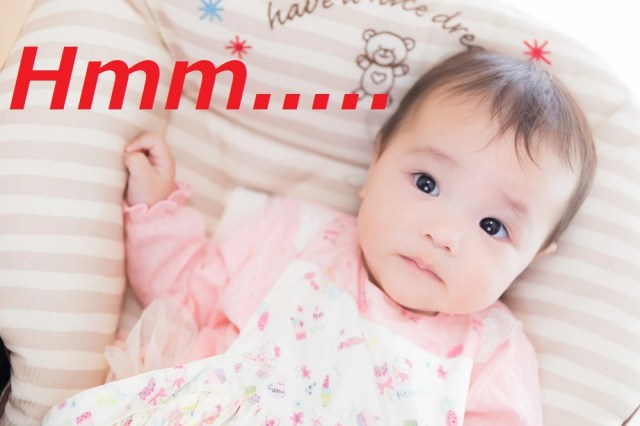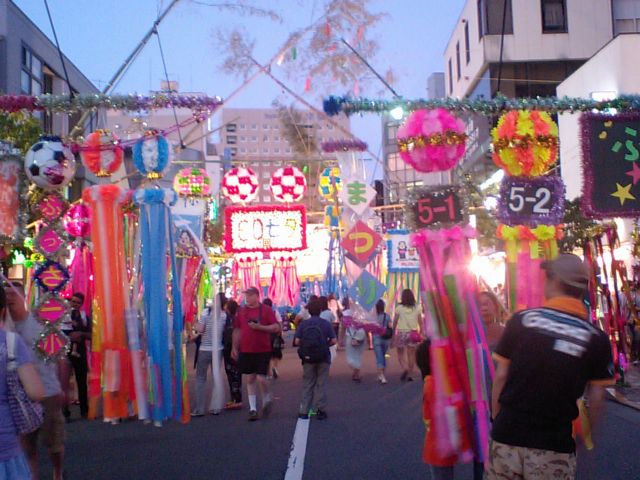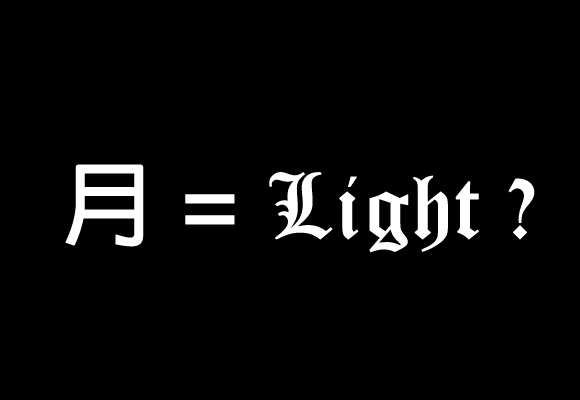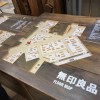Many are assuming this is a backlash against trendy kirakira names, but is that really the case?
Kirakira names
Around the beginning of July in Japan, you’ll start to see shops, stations, streets, and homes being decorated for the Tanabata festival (in English often referred to as the Star Festival), which happens on the seventh of July (or, depending on who you ask, the around the seventh of August)each year. Most typically you’ll find large branches of bamboo leaves, called sasa, hung with colorful origami decorations, and wishes written on strips of paper by people hopeful that they will be granted when star-crossed lovers Altair and Vega meet.
Generally you’ll find typical wishes for happiness, good health, getting into a good school or finding a good job… At times, you’ll also see some witty ones that will give you a good chuckle. Or, you know, ones that invoke pity for the wisher whose parents named them Elmo.
As much as politicians try to prevent them and doctors disapprove of them, kirakira Japanese names, the kinds that hold double meanings or are just plain hard to read, are apparently still on the rise. A recent survey of kids in their teens and early twenties showed that now more than 40 percent of students know someone at their school with an obscure reading for their name.
Reading name kanji is already a difficult task. A single symbol can have up to a dozen different readings, and while some are more common than others, there’s always a bit of guesswork that goes into deciphering the pronunciation of someone’s name. It’s bad enough when two people have names with the same symbols and entirely different readings. Imagine the frustration that teachers must face when a new student’s name is pronounced in a way that doesn’t even sound Japanese!
There’s a difference between naming your kid something “international” and making your kid’s name a nuisance. See if you can understand the reason behind the reading of some of these kirakira names.




 We found possibly the quietest Japanese-style hotel in Tokyo’s bustling Shinjuku district
We found possibly the quietest Japanese-style hotel in Tokyo’s bustling Shinjuku district Japanese thug wear from Birth Japan perfect for those breaking bad next year
Japanese thug wear from Birth Japan perfect for those breaking bad next year Nagoya’s dark-red miso has continued to capture tastebuds for generations
Nagoya’s dark-red miso has continued to capture tastebuds for generations Survey finds more than 70 percent of Japanese children have an online friend
Survey finds more than 70 percent of Japanese children have an online friend 7 great places to see Mt. Fuji from without having to climb it
7 great places to see Mt. Fuji from without having to climb it What’s the best way to spend 1,000 yen at Denny’s in Japan?
What’s the best way to spend 1,000 yen at Denny’s in Japan? The world’s biggest Muji store opened in Hiroshima, and we went to check it out!
The world’s biggest Muji store opened in Hiroshima, and we went to check it out! Say hello to the Big Bomb Onigiri, a beast of a Japanese rice ball
Say hello to the Big Bomb Onigiri, a beast of a Japanese rice ball 7 reasons why you should visit Aomori Prefecture
7 reasons why you should visit Aomori Prefecture Chiikawa Bakery launches a limited-time menu of sunburned characters and refreshing drinks
Chiikawa Bakery launches a limited-time menu of sunburned characters and refreshing drinks Starbucks Japan ready to get Year of the Horse started with adorable drinkware and plushies【Pics】
Starbucks Japan ready to get Year of the Horse started with adorable drinkware and plushies【Pics】 7-Eleven Japan’s ramen-cooking robot whipped us up a bowl of noodles【Taste test】
7-Eleven Japan’s ramen-cooking robot whipped us up a bowl of noodles【Taste test】 Lacquerware supplier to emperor of Japan and Pokémon team up for new tableware
Lacquerware supplier to emperor of Japan and Pokémon team up for new tableware Cyberpunk anime meets traditional culture in Ghost in the Shell gold leaf Japanese changing screens
Cyberpunk anime meets traditional culture in Ghost in the Shell gold leaf Japanese changing screens Japan may add Japanese language proficiency, lifestyle classes to permanent foreign resident requirements
Japan may add Japanese language proficiency, lifestyle classes to permanent foreign resident requirements Hello Kitty Choco Egg figures are an adorable trip through three periods of Japanese pop culture【Pics】
Hello Kitty Choco Egg figures are an adorable trip through three periods of Japanese pop culture【Pics】 Japan’s otoshidama tradition of giving kids money at New Year’s gets a social welfare upgrade
Japan’s otoshidama tradition of giving kids money at New Year’s gets a social welfare upgrade Starbucks Japan releases new zodiac chilled cup drink for 2026
Starbucks Japan releases new zodiac chilled cup drink for 2026 Can a dirty butthole make you filthy rich in Japan? We’re starting a New Year’s lottery experiment
Can a dirty butthole make you filthy rich in Japan? We’re starting a New Year’s lottery experiment 7-Eleven Japan starts new temporary luggage storage service in over 300 branches
7-Eleven Japan starts new temporary luggage storage service in over 300 branches Disillusionment at Tsukiji’s tourist-target prices led us to a great ramen restaurant in Tokyo
Disillusionment at Tsukiji’s tourist-target prices led us to a great ramen restaurant in Tokyo Starbucks teams up with 166-year-old Kyoto doll maker for Year of the Horse decorations【Photos】
Starbucks teams up with 166-year-old Kyoto doll maker for Year of the Horse decorations【Photos】 Tokyo considering law requiring more trash cans following litter increase in heavily touristed area
Tokyo considering law requiring more trash cans following litter increase in heavily touristed area Tokyo’s Tsukiji sushi neighborhood asks tour groups to stay away for the rest of the month
Tokyo’s Tsukiji sushi neighborhood asks tour groups to stay away for the rest of the month Nintendo’s Kirby now delivering orders at Kura Sushi restaurants, but not in Japan
Nintendo’s Kirby now delivering orders at Kura Sushi restaurants, but not in Japan Tokyo event lets you travel back in time, for free, to celebrate 100 years since Showa era start
Tokyo event lets you travel back in time, for free, to celebrate 100 years since Showa era start Sanrio theme park in Japan announces plans to expand into a Sanrio resort
Sanrio theme park in Japan announces plans to expand into a Sanrio resort Stamina-destroying “Paralysis Noodles” are Tokyo’s newest over-the-top ramen innovation
Stamina-destroying “Paralysis Noodles” are Tokyo’s newest over-the-top ramen innovation Survey asks foreign tourists what bothered them in Japan, more than half gave same answer
Survey asks foreign tourists what bothered them in Japan, more than half gave same answer Japan’s human washing machines will go on sale to general public, demos to be held in Tokyo
Japan’s human washing machines will go on sale to general public, demos to be held in Tokyo Japan’s deadliest food claims more victims, but why do people keep eating it for New Year’s?
Japan’s deadliest food claims more victims, but why do people keep eating it for New Year’s? We deeply regret going into this tunnel on our walk in the mountains of Japan
We deeply regret going into this tunnel on our walk in the mountains of Japan Studio Ghibli releases Kodama forest spirits from Princess Mononoke to light up your home
Studio Ghibli releases Kodama forest spirits from Princess Mononoke to light up your home Major Japanese hotel chain says reservations via overseas booking sites may not be valid
Major Japanese hotel chain says reservations via overseas booking sites may not be valid Put sesame oil in your coffee? Japanese maker says it’s the best way to start your day【Taste test】
Put sesame oil in your coffee? Japanese maker says it’s the best way to start your day【Taste test】 No more using real katana for tourism activities, Japan’s National Police Agency says
No more using real katana for tourism activities, Japan’s National Police Agency says Starbucks Japan reveals new sakura drinkware collection, inspired by evening cherry blossoms
Starbucks Japan reveals new sakura drinkware collection, inspired by evening cherry blossoms Updated cherry blossom forecast shows extra-long sakura season for Japan this year
Updated cherry blossom forecast shows extra-long sakura season for Japan this year What’s the best way to spend 1,000 yen at Denny’s in Japan?
What’s the best way to spend 1,000 yen at Denny’s in Japan? The world’s biggest Muji store opened in Hiroshima, and we went to check it out!
The world’s biggest Muji store opened in Hiroshima, and we went to check it out! Say hello to the Big Bomb Onigiri, a beast of a Japanese rice ball
Say hello to the Big Bomb Onigiri, a beast of a Japanese rice ball 7 reasons why you should visit Aomori Prefecture
7 reasons why you should visit Aomori Prefecture Chiikawa Bakery launches a limited-time menu of sunburned characters and refreshing drinks
Chiikawa Bakery launches a limited-time menu of sunburned characters and refreshing drinks 7-Eleven Japan’s ramen-cooking robot whipped us up a bowl of noodles【Taste test】
7-Eleven Japan’s ramen-cooking robot whipped us up a bowl of noodles【Taste test】 What are you supposed to do with your backpack on a crowded train in Japan?
What are you supposed to do with your backpack on a crowded train in Japan? Hey, Japanese taxi driver! Take us to the best Turkish rice restaurant in Nagasaki!
Hey, Japanese taxi driver! Take us to the best Turkish rice restaurant in Nagasaki! Take it From a Native! Recipe for Delicious Japanese Curry as Found at Coco Ichiban
Take it From a Native! Recipe for Delicious Japanese Curry as Found at Coco Ichiban Unique inclined elevator in Japan leads to a town that inspired Studio Ghibli’s Spirited Away
Unique inclined elevator in Japan leads to a town that inspired Studio Ghibli’s Spirited Away Japanese Lolita fashion designers create amazing Madoka Magica dresses
Japanese Lolita fashion designers create amazing Madoka Magica dresses Sumo Sanrio! Hello Kitty and pals team up with Japan Sumo Association for new merch【Pics】
Sumo Sanrio! Hello Kitty and pals team up with Japan Sumo Association for new merch【Pics】 Cyberpunk anime meets traditional culture in Ghost in the Shell gold leaf Japanese changing screens
Cyberpunk anime meets traditional culture in Ghost in the Shell gold leaf Japanese changing screens 25-year bond between man and fish in Chiba touches the world【Video】
25-year bond between man and fish in Chiba touches the world【Video】